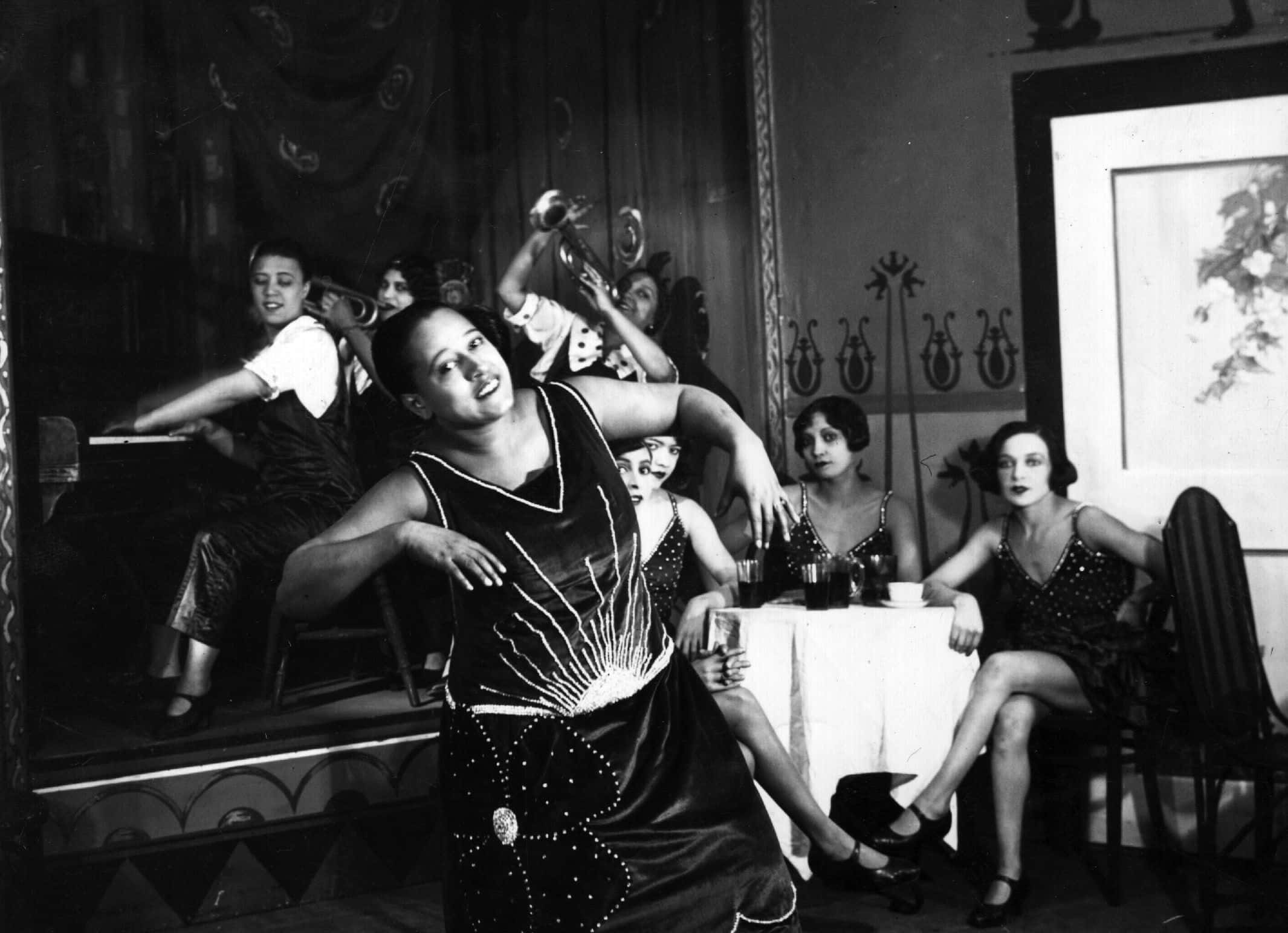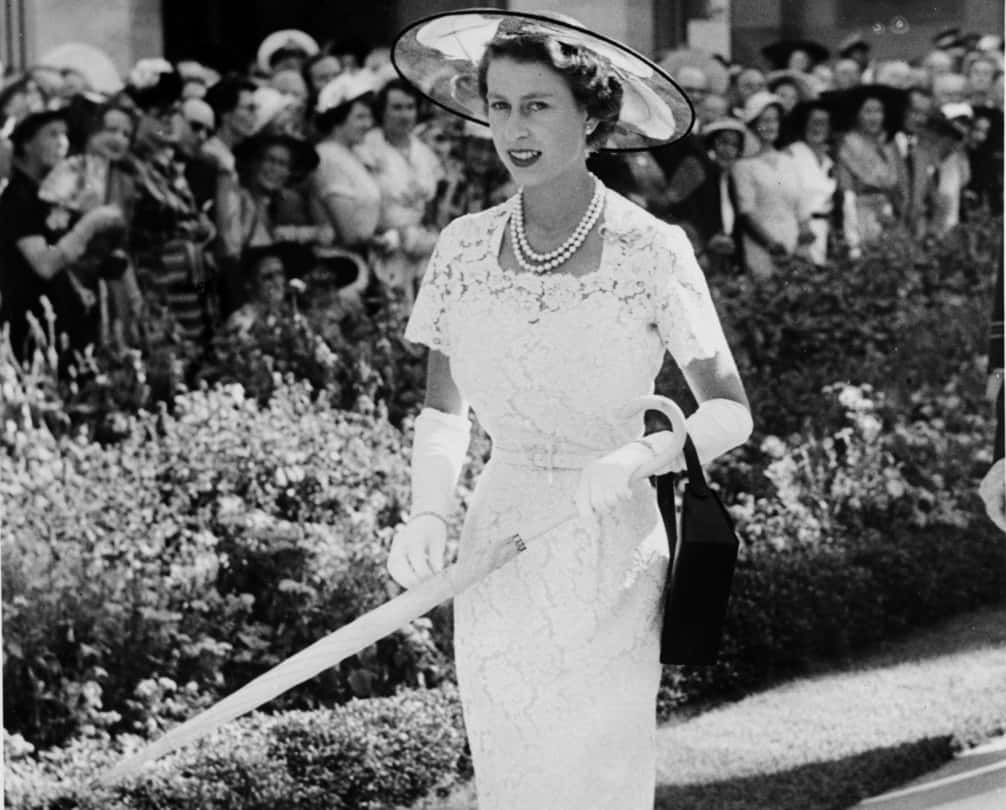Adelaide Hall may not be as well known today as someone like Josephine Baker, but her history is just as sumptuous and scandalous as any other Jazz Age siren. She had a singing career most girls could only dream of, but personal life was wracked with pain. Hum a tune to these 42 sultry facts about Adelaide Hall.
1. Born to Do It
Adelaide Hall started out as a true New Yorker. On October 20, 1901, she was born in Brooklyn to Elizabeth and Arthur William Hall. Even from a young age, music ran in her veins: her father taught piano at the Pratt Institute, and he later encouraged Adelaide and her sister Evelyn to attend and hone their musical chops.

2. Reach for the Stars
Hall was very close to her father. According to one of her biographies, Arthur and Adelaide would often have long, drawn out conversations with each other, with Arthur frequently telling his daughter, “Sing to the moon and the stars will shine". The young girl took it to heart and set her sights on becoming a star.
3. Started From the Bottom
As young teenagers, Adelaide and Evelyn formed the group the Halls Sisters, cutting their teeth on small local venues around town.
4. Daddy’s Gone
Soon enough, unimaginable tragedy struck the Hall family. When Adelaide was just a teenager, her adored father ceased to exist, leaving his little girl devastated and grieving—but that was merely the start of the nightmare.
5. The Breadwinner
In 1918, Adelaide's sister Evelyn succumbed to complications of pneumonia at the mere age of 16. Suddenly, Hall was almost entirely alone. She had to support not both herself and her mother in order to stay alive and keep off of the streets. The little girl had to grow up incredibly fast and start making a name for herself—quick.
6. Working Girl
Hall plunged into the entertainment world head first, and in 1921 she found a job working in the chorus line of the hit black musical Shuffle Along. These all-black revues were popular at the time, and Hall appeared in a string of them during her early years, armed only with her stellar voice, hypnotic moves, and burgeoning hourglass figure.
7. Come Sail Away
During this time, Hall travelled to some of the most remote corners of the world and saw sights in both America and Europe that she had only dreamed of as a child. So when she met the dashing and equally adventurous Trinidadian sailor Bertram Errol Hicks, she quickly fell head over heels in love with the man.
8. True Love
Hicks and 23-year-old Hall united in marriage in 1924; they remained together until his departure in 1963, many years later.
9. Take a Bite out of This
After their marriage, Hicks opened up a club in Harlem called “The Big Apple” and appointed himself as Hall’s business manager.
10. Hot Spot
One of Hall’s most famous soirees was in Berlin’s renowned Eldorado Café, a transvestite club in the heart of the liberal, free-living city. The venue has appeared not only in Christopher Isherwood’s influential novel Goodbye to Berlin, but also the classic musical Cabaret. Adelaide always did know the happening places to be.
11. Barely There
Hall soon became known not just for her voice, but also for her willingness to bear it all—or nearly. She’d romp around on stage in skimpy outfits, sometimes only accompanied by a ukulele. As one critic observed in their review of her show, it featured "pretty girls, catchy music, a touch of art, which verges on the edge of revealing attire".
12. Hitting the Big Time
In 1927, when she was still just 26 years old, Hall teamed up with a jazz legend: none other than Duke Ellington. The duo collaborated on the record “Creole Love Call". Due to the massive amount of talent between the artists, the song was a massive success, launching both Ellington and Hall firmly into the international spotlight.
13. The First of Her Kind
Oddly, Hall doesn’t sing any words on her most famous song. Instead, she murmurs and hums high-pitched trills and sounds over the music in her distinctive voice. Because of this wordless style, many have noted that Hall’s performance set the stage for a revolutionary musical style: the scatting of legends like Ella Fitzgerald, Dizzy Gillespie, and more.
14. Origin Story
The story behind the famous song is the story of genius at work. She and Duke Ellington had been performing at the same revue show, and Ellington had a new song, “Creole Love Call,” that he was trying out. As Hall remembered, “I was standing in the wings behind the piano when Duke first played it. I started humming along".
She continued, “He stopped the number and came over to me and said, "That's just what I was looking for. Can you do it again?’” But Hall had only been mindlessly humming, and she told him so. After some more pressure, Ellington managed to get her to repeat the performance, then grinned and said, "Addie, you're going to record this". The rest was history.
15. Superstar
In 1928, Hall broke through in earnest and became a common household name when she starred in the all-black Broadway show Blackbirds of 1928. The spectacle was an absolute phenomenon, and it went on to become the most successful show of its kind. The show also earned Hall her winning nickname, “The Singing Blackbird".
16. Diga Don’t
Hall’s wriggling number “Diga-Diga Do” in Blackbirds was so hot and heavy that it caused a national sensation. In the steamy performance, Hall’s character praises her South African Zulu lover—and for weeks, it was all the papers could talk about. Here's a choice lyric: "You love me and I love you / And when you love it is natural to / Diga diga doo, diga diga diga doo". Ooh la la.
17. Baby, I’m Worth It
The creator of Blackbirds, Lew Leslie, was immensely worried about the controversy Hall was stirring up in America and across the world. As a result, he reportedly took out a huge insurance policy on both Hall and her co-star Bill “Bojangles” Robinson, just to make sure that nothing catastrophic would happen to his talent.
18. Tres Belle
The Blackbirds show eventually toured in Paris and played for four months at the notorious Moulin Rouge cabaret.
19. Fan Frenzy
By the time of her Paris jaunt, Hall was so popular that a horde of reporters and fans mobbed her as she left the Paris train station. According to reports at the time, this overwhelming reception was reminiscent of the legendary greeting that comedian Charlie Chaplin received when he visited Paris just two years before.
20. A Clean Break
Sadly, nothing good can last. In November 26, 1929, Hall abruptly quit Blackbirds for reasons that are still mysterious to us. Her decision shocked Lewis; profoundly betrayed, he spent the next bitter months trying to ban her from performing shows outside of Blackbirds so he could lure her back. It didn’t work—the world was too hungry for Hall, and she got other gigs immediately.
21. Bewitching Blackbird
Hall was infamously hypnotic on stage. On one occasion, a critic who witnessed her singing and dancing was so enthralled by her performance that he forgot to write any of the songs she performed down in his notepad.
22. Look out Below
Despite being a wonderful dancer, Hall was more than a little accident prone—and it got her into some truly terrifying situations. In 1933, just a couple of days before she was set to appear on stage in New York, Hall fell into an open manhole in Boston. On the night of the show in New York, she had to limp across the stage to reach her microphone.
23. Smoke and Mirrors
Hall was a frequent performer in New York’s legendary Cotton Club in Harlem. In one electrifying performance, the venue covered the floor with nitrogen smoke as Hall captivated audiences. It was one of the first times that this practical effect was used, and the crowd went utterly wild. Adelaide Hall had caused a sensation yet again.
24. Living Large
As she grew more successful and much wealthier, Hall kept herself and her husband in a comfort and luxury worthy of her fame. In 1935, she let a reporter into her decadent mansion. The humble abode contained a massive sunroom, a team of servants, and state-of-the-art facilities for roller-skating, swimming, and horseback riding.
25. The Big Apple
In 1935, Hall traded in her bustling New York life for the cobblestone streets of Paris. While there, she developed her own version of the scandalous Can-can for La Grosse Pomme nightclub. She cheekily called it “the Canned Apple".
26. Keep on Truckin’
Hall’s Paris days also produced a dance craze. The entertainer introduced the French to the Truckin’ dance step, a sassy jazz move where you shuffle away from your partner while waggling your finger.
27. The Best Revenge Is Your Paper
At the height of her career, Hall was the wealthiest Black woman in America.
28. London Years
The always-moving Adelaide eventually left Paris for London in the late 1930s. Just like American and French audiences, the British public were entranced with her, and Hall made it her permanent home.
29. Dancing Queen
Hall could hob-knob with the very upper crust of English society. It was even said that a young Princess Elizabeth (soon to be Queen Elizabeth II) frequented one of her clubs. Even better, Hall is rumoured to have taught the future monarch how to do the Charleston, a popular dance from the Jazz Age where you extend your arms, kick your legs, and twirl.
30. Air Raid Aria
Soon after Hall’s move to London, WWII rocked the world and the city began suffering brutal air raids. Through it all, Hall’s performances were a guiding light for the country, even when they put her in mortal danger. In one instance, she was actually on stage when the Germans started attacking—but nothing could scare Ms. Adelaide Hall. Instead of rushing off, she bravely kept singing.
31. Can’t Keep a Good Woman Down
In fact, Hall made history that night. As the chanteuse declared, "even though we could hear explosions rattling outside the theater, we persevered...I had performed 54 songs until we received the signal of safety at 3:45 a.m. in the morning". These 54 encores are now thought to hold the world record for the highest number of encores by a single artist in one performance.
32. What We Lost in the Raid
Adelaide Hall didn't emerge from the conflict entirely unharmed. In 1939, her husband Bertram Hicks was seeking refuge from another air raid in the basement of their London club when tragedy came knocking. A buried landmine suddenly exploded, reducing the club to rubble. Thankfully and miraculously, Hicks survived—but the club did not.
 Zastolskiy Victor, Shutterstock
Zastolskiy Victor, Shutterstock
33. Can’t Stop, Won’t Stop
The Singing Blackbird had a legendary and lasting career that spanned a whopping 70 years, with Hall consistently performing and releasing music all this time. In 2003, she was even inducted into the Guinness Book of World Records as the “world’s most enduring artist”; she had released music across eight decades. Talk about a legacy.
34. Take It to the Limit
Hall was a bona fide star right up until her dying days. Her very last concert appearance was in 1992 at the illustrious Carnegie Hall’s Cabaret Comes to Carnegie series. It was just a year before her passing.
35. I’m Not a Normal Grandma, I’m a Cool Grandma
Even as a 91-year-old woman, Hall still had it. In 1992, she presented an award for the British Academy of Songwriters, Composers, and Authors in a dazzling head-to-toe sequinned suit. When asked about the evening, the legend purred, “They said, 'You look like a Queen. You don't look more than fifty or sixty’…I must have been the oldest one there!”
36.Surprise at Heart
When Hall departed this life at the ripe old age of 92 on November 7, 1993, her funeral was attended by a constellation of Jazz stars. During the eulogy, broadcaster Michael Parkinson commented fittingly, “Adelaide lived to be ninety-two and never grew old".
37. White Picket Fence Gone Wrong
In 1932, Hall and her husband Bertram Hicks decided to buy a house and settle down. The decision came with heartbreaking consequences. They were affluent beyond their wildest imaginations, and rented out a property in the prestigious Westchester suburb of New York—only to discover that their prejudiced neighbors did not welcome them and even threatened to oust them.
38. Little Fires Everywhere
Westchester was a sleepy upper-class neighborhood filled with beautiful architecture, good schools, and well manicured lawns—but the darkness that lurked beneath it was the stuff of absolute nightmares. One day, someone from the suburb went far beyond the neighborhood's previous threats. Not satisfied with trying to evict the Singing Blackbird, an unknown neighbor broke into the Hall and Hicks residence and tried to burn it down to the ground.
39. Not Going Down Without a Fight
Hall was her usual stubborn self throughout the entire ordeal. She refused to give into the neighborhood's demands, and when word of the break-in got out, letters of support came pouring in from her many adoring fans. The legendary singer even gave a press conference and declared her right to live in Westchester, just like any other American citizen.
40. Gone Too Soon
Though it was a huge success, Hall’s time on the Blackbird show was plagued with misery. In fact, she had only gotten the part after a great tragedy. The show’s creator Lew Leslie had originally wanted the wide-eyed entertainer Florence Mills to perform in the revue. After all, Mills had successfully starred in the original London run. Regrettably, the girl succumbed to tuberculosis at the tender age of 31.
41. A Family Scandal
Blackbirds ensured that Hall became a major star, but it also almost brought about the singer's personal ruin. One day, her conservative mother Elizabeth went to watch her daughter in the hit show—and what she saw horrified her. She was so scandalized by her little girl’s “risqué dance moves” that she tried to storm the stage then and there to drag her daughter away.
42. Mother Knows Best
When this tactic failed, Elizabeth Hall went old school. She basically grounded Adelaide, banning her daughter from performing in the show anymore. It might have worked, but the headstrong Hall refused to be intimidated. After a one-show absence, she stomped triumphantly back into the theater and continued dancing, breaking her mother’s heart.

















































